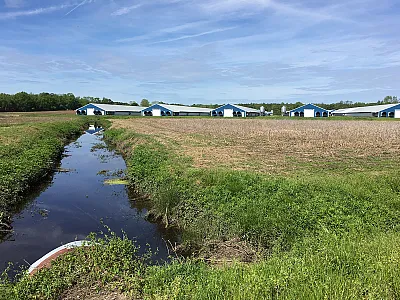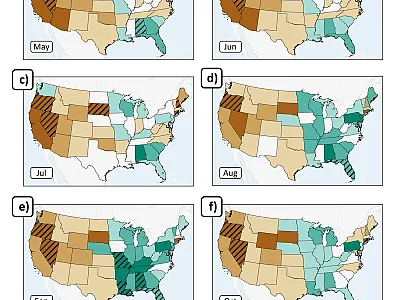Sensors make sense for scientific research
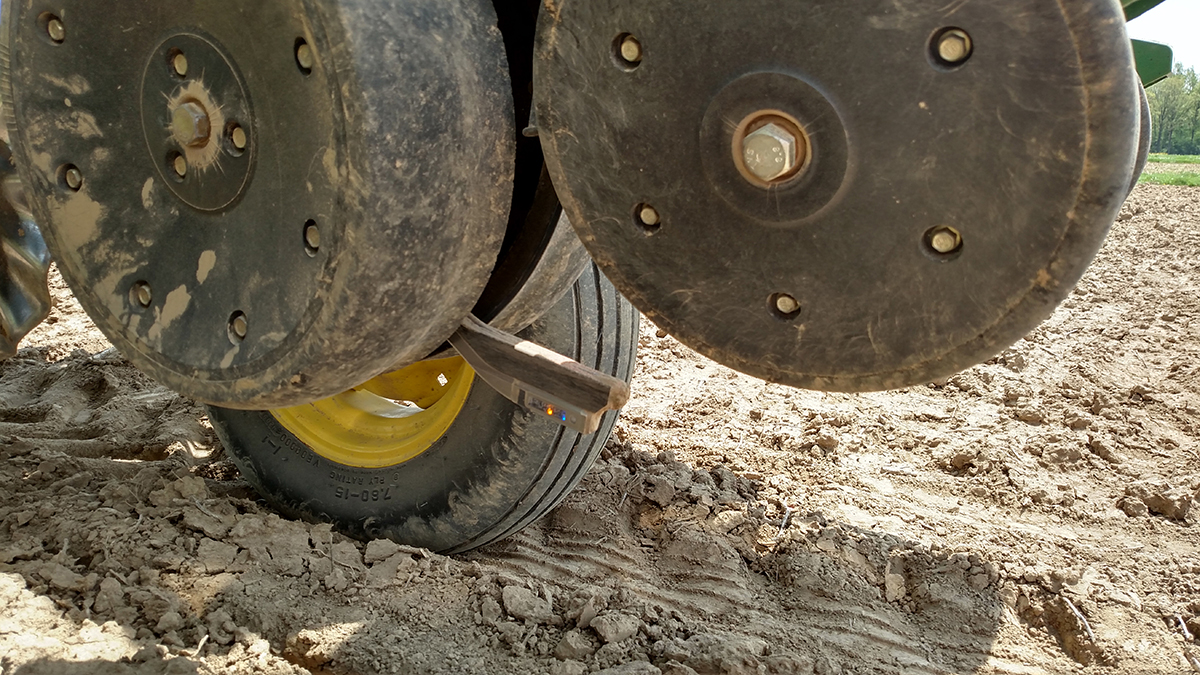
Sensors play a key role in research by enabling efficient data collection in both controlled and field conditions. In agronomy, crop science, and soil science, sensors can be used to monitor key parameters related to crop growth, soil health, and environmental conditions. Traditional manual data collection can be challenging, and sensors can help overcome these limitations by providing real-time, high-resolution data, even in extreme weather events. This article explores different types of sensors, their role, and applications in field conditions for crop production and soil and water management.
Research is a systematic process of inquiry that involves collecting, analyzing, and interpreting data to discover new knowledge, test existing theories, or find solutions to problems, often through investigation or experimentation with the goal to expand understanding of a particular subject area. To derive the conclusion of the experiments, the data related to the different variables must be measured. These observations enhance our understanding of the effects of surroundings and treatments on the subject.
Sensors play a key role in research by enabling efficient data collection in both controlled and field conditions. In agronomy, crop science, and soil science, sensors can be used to monitor key parameters related to crop growth, soil health, and environmental conditions. Traditional manual data collection can be challenging, and sensors can help overcome these limitations by providing real-time, high-resolution data, even in extreme weather events. This article explores different types of sensors, their role, and applications in field conditions for crop production and soil and water management.
Types of sensors
A sensor is a device that detects and measures physical, chemical, or biological properties and converts them into signals for monitoring, analysis, or automation. Sensors can be classified based on their working mechanisms or the parameters they measure. Below is the brief overview of key sensor classes.
Physical sensors: measure physical properties such as temperature, pressure, motion, and light.
Chemical sensors: detect chemical composition and concentrations such as pH sensors, gas sensors, and ion-selective sensors.
Optical and imaging sensors: capture images or analyze light spectrum properties. Optical sensors can be further classified into two classes: active and passive optical sensors. Active sensors have their own light source, whereas passive sensors depend on an external light source like the sun. Optical and imaging sensors include RGB cameras, multi- and hyper-spectral sensors, microwave sensors, and spectroradiometers (Figure 1).
LiDAR (Light Detection and Ranging) is a light-based sensor used to measure the distance of objects from the reference point, which can be used to measure crop or tree morphology, height, ground elevation, and water basins.
Biosensors: detect biological changes and are often used in healthcare and environmental applications, including glucose sensors, DNA sensors, microbial sensors, etc.
Environmental sensors: measure environmental factors like air quality, humidity, and soil conditions. They include humidity sensors, soil moisture sensors (Figure 2), and air quality sensors.
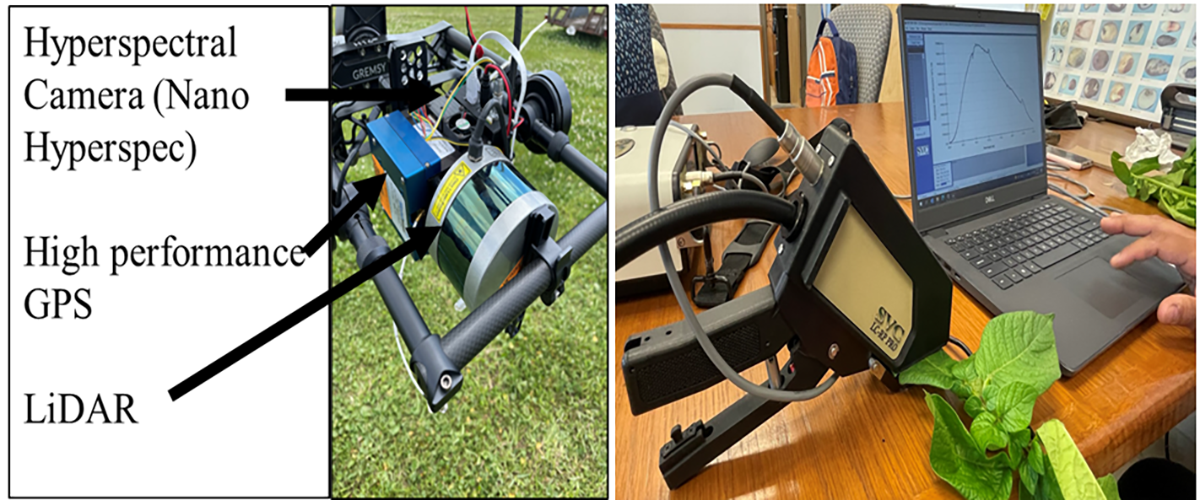
Application of sensors in agriculture, soil, and water
Crop production, protection, and monitoring
Crop production, protection, and monitoring benefit from the various sensors to make informed decisions, such as optical and weather sensors. The optical sensors (e.g., RGB, multi, or hyper-spectral imaging platforms) mounted on an unmanned aerial vehicle or satellite can provide information such as disease and pest pressure on crops, weed pressure in the field, invasive species hotspots, and more. Besides, this sensing technology can also help select superior breeding materials using high-throughput phenotyping technology. Similarly, sensors such as LiDAR and those used for collecting weather data can help estimate crop growth and yield, which helps in post-harvest crop management decisions and marketing.
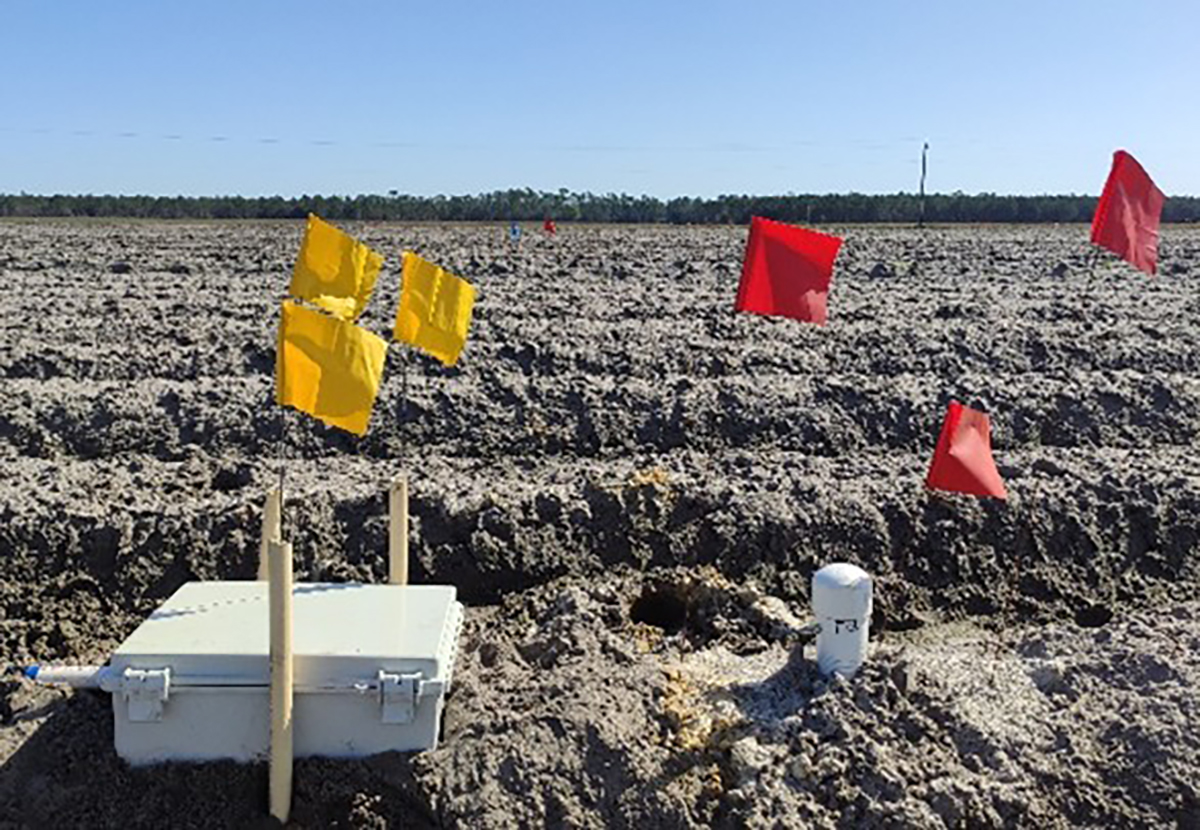
Soil fertility and nutrient management
Soil fertility and nutrient management decisions are critical for a successful cropping season as they directly impact crop growth and yield. Various sensors have been tested to help in nutrient management decisions, like canopy nitrate tests, handheld active optical sensors, and hyperspectral sensors for estimating canopy nutrient concentration (Singh et al., 2015; Sharma et al., 2024a). The sensor-based technologies can also facilitate mapping soil fertility variation at the farm scale and allow farmers to apply variable fertilizer rates to maintain uniform yield and overall fertilizer use efficiency at the farm scale.
Water quality and irrigation management
Sensors also help monitor water quality in rivers, creeks, lakes, and groundwater. Sensor technologies permit real-time and continuous monitoring of critical water parameters, including phosphorus (P), nitrogen (N), dissolved oxygen, pH, water level, current, etc. These monitoring systems help efficiently use a critical resource like water. Similarly, soil moisture sensors provide crop water requirement information, which is crucial to provide optimum irrigation and help with effective scheduling.
Research and investigations have also been benefited from the extensive use of sensing technology to develop fertilizer, water, disease, and pest related recommendations. These investigations have significantly changed crop production technology and provided food security to the global population. Sensor application in research and innovation in the agricultural domain has resulted in the potential to develop practices and products for future generations, which can address the current and future crises like climate change and depleting natural resources. The application of sensor technology in water resources and management has provided an opportunity to develop policies that are sustainable and limit the carbon footprint of the crop production practices. Several federal and state agencies provide sensor-collected data as open-source for research and application, which can be used to develop new knowledge and a decision support system (Sharma et al., 2024b). The following are some of the organizations that provide different sensor data in agriculture and environmental sciences.
The U.S. Geological Survey (USGS): Provides optical remote sensing data.
The National Oceanic and Atmospheric Administration (NOAA) provides weather data.
The Environmental Protection Agency (USEPA) provides environmental parameters and quality data.
The South Florida Water Management District (SFWMD) provides data relating to the water quality.
Conclusions
Sensors have changed how we make crop production decisions, from field preparation to harvesting and post-harvest handling. Advancements in sensing technology have reduced the farm input costs, optimized the use of resources, and increased overall farm outputs. However, it is necessary to develop a well-connected nexus of different sensors and sensing technologies in one platform, along with providing decision support tools to farmers, which will increase the adaptation of such sensing technology. Also, it is critically important to develop and test new sensing technology to widen its application in crop production and environmental science.
References
Sharma, A.K., Singh, A., Sidhu, S. K., Zotarelli, L., & Sharma, L. K. (2024a) Fresh Leaf Spectroscopy to Estimate the Crop Nutrient Status of Potato (Solanum tuberosum L.). Potato Res.. https://doi.org/10.1007/s11540-024-09766-5
Sharma, A. K., Datta, A., Morales‐Ona, A., & Ghimire, D. (2024b). Empowering Research: A Guide to Useful Open‐Source Data. CSA News, 69(9), 28-31.
Singh, A., Serbin, S. P., McNeil, B. E., Kingdon, C. C., & Townsend, P. A. (2015). Imaging spectroscopy algorithms for mapping canopy foliar chemical and morphological traits and their uncertainties. Ecological Applications, 25(8), 2180-2197.
Connect with us!
This article was produced by members of the ASA, CSSA and SSSA (ACS) Graduate Student Committee. We'd love to hear your thoughts on this article! Your feedback helps us make future editions even better. Please let us know what you think about the content, clarity, and usefulness. You can send your feedback to ayushsharma@ufl.edu or use our feedback form. Thank you for your time and input!
If you would like volunteer to join the committee to help plan any of our activities, please reach out to Jessica Bezerradeoliveira (jbezerra@ksu.edu), the 2025 chair of the committee!
If you would like to stay up to date with the ACS Graduate Student Committee, learn more about our work, contribute to one of our CSA News articles, or suggest activities you would like us to promote, watch your emails and connect with us on X (formerly Twitter) or Facebook or visit: agronomy.org/membership/committees/view/ACS238/members, crops.org/membership/committees/view/ACS238/members, or soils.org/membership/committees/view/ACS238/members.
Text © . The authors. CC BY-NC-ND 4.0. Except where otherwise noted, images are subject to copyright. Any reuse without express permission from the copyright owner is prohibited.




